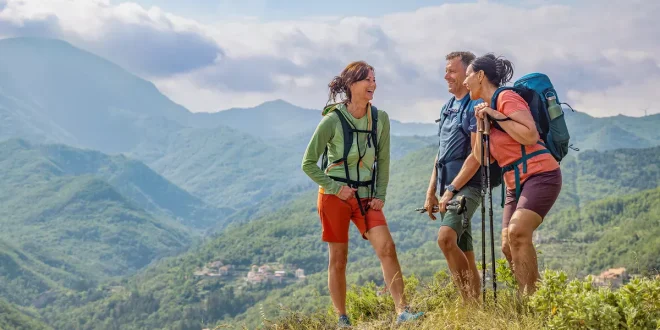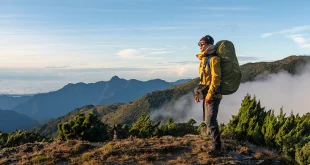Every time I lace up my boots and hit a trail, I expect some surprises. But lately, it feels like hiking is getting more unpredictable than ever. The hiking challenges for hikers in 2025 aren’t just about steep climbs or tricky river crossings—they’re shaped by bigger forces like the environment, technology, and even the growing number of people who love the outdoors.
As someone who’s been hiking for years, I can tell you that being prepared today looks very different than it did just a few years ago. Let’s dive into the biggest challenges hikers like you and me are facing this year and how we can adapt.
The Weather Is Becoming a Real Wildcard
In the past, checking the weather forecast the night before a hike usually did the trick. Now, not so much. One of the major hiking challenges for hikers in 2025 is dealing with unpredictable weather patterns that can flip in a matter of hours.
Last spring, I was hiking in the Rockies and left camp under sunny skies, only to be battered by hail and freezing rain by mid-afternoon. Weather apps couldn’t predict it, and honestly, I wasn’t fully prepared. Since then, I never head out without extra waterproof layers, a thermal blanket, and a backup plan.
Flooding, landslides, and sudden snowstorms are popping up in places and seasons we’re not used to. Trails that were once safe and stable are now at risk of erosion or even being wiped out completely. It’s changing how we plan our trips—and how we think about safety.
Crowded Trails Are Creating New Problems
I love seeing more people fall in love with nature. But at the same time, hiking challenges for hikers in 2025 are often tied to the sheer number of people hitting the same spots.
Some trails that used to be hidden gems now feel like rush hour. A couple of months ago, I tried to hike a popular route in Yosemite and spent the first two miles stuck behind a slow-moving crowd. Beyond the annoyance, heavy foot traffic wears down trails faster, causes more litter, and disturbs wildlife.
It’s pushing some parks to introduce reservation systems, quotas, or even temporary closures to let the land heal. Personally, I’ve started seeking out lesser-known trails or planning hikes for weekdays instead of weekends to find a little peace and quiet.
Damage to Natural Spaces Is Adding Up
More visitors mean more pressure on fragile ecosystems. Areas with delicate vegetation or endangered species are especially at risk. I’ve witnessed hikers trampling through protected meadows just to snap a photo. It’s painful to see, and it’s why Leave No Trace principles are more important than ever.
I’ve made it a point to share trail ethics with new hikers I meet, and honestly, a little education goes a long way.
Technology Is Changing How We Explore—and Sometimes Hurting Us
There’s no denying that technology has made outdoor adventures more accessible. But one of the hidden hiking challenges for hikers in 2025 is how easy it is to become too dependent on gadgets.
A few weeks ago, I bumped into a group trying to navigate a dense forest trail with nothing but a hiking app. When their phone batteries died, they were completely lost. No compass, no map, not even a whistle. I ended up guiding them back to the parking lot.
These days, it’s easy to think your phone can do everything. But tech can fail at the worst possible moment. I always pack a traditional map, a physical compass, and an old-school whistle, just like I learned back when I first started hiking.
AI Tools Are Shaping Our Trips—for Better or Worse
Another new development is the rise of AI in hiking apps. These tools now recommend trails based on your fitness, preferences, and even your heart rate if you wear a smartwatch. It’s incredibly useful, but it can also make hikers too confident about trails they aren’t ready for.
I tried an AI-recommended “easy” trail last month and found myself halfway up a steep, icy slope that clearly wasn’t meant for beginners. Lesson learned: technology can help, but it doesn’t replace good judgment and on-the-ground experience.
Environmental Changes Are Redrawing the Map
Another major shift that adds to hiking challenges for hikers in 2025 is how much the environment itself is changing.
Wildfires are more frequent and intense, leading to entire trail systems being closed for months—or permanently. When I visited Oregon last summer, I planned a multi-day backpacking trip, only to find that half the route was closed due to fire damage. It forced me to rethink my whole itinerary overnight.
At the same time, some places are dealing with the opposite problem: floods, mudslides, and melting permafrost in alpine areas are making old trails unsafe or completely impassable. The landscapes we’ve loved for decades are transforming, and hikers have to stay flexible and ready to change plans.
Wildlife Encounters Are Increasing
As natural habitats shrink or shift, wildlife is on the move. This year, I had a closer-than-comfortable encounter with a moose that had wandered down into lower elevations. Bears, mountain lions, and other animals are adjusting their ranges, which makes it even more critical to understand local wildlife behavior before heading out.
I now make it a point to refresh my animal safety knowledge every season and carry bear spray if I’m anywhere it might be needed.
Mental and Physical Health Challenges Are on the Rise
Not every obstacle is external. Some of the hiking challenges for hikers in 2025 are about what we bring with us mentally and physically.
After a couple of stressful years globally, many people are turning to nature for healing—which is wonderful. But I’ve noticed that more hikers, including myself, are dealing with anxiety, burnout, or physical fatigue even before they hit the trail.
Hiking has always been a physical and mental game, but these days, the stakes feel a little higher. I’ve had to remind myself to slow down, rest often, and be kind to myself when a hike doesn’t go as planned.
Preparation and Recovery Are Key
Stretching properly, eating enough, hydrating well, and even meditating before and after hikes are things I’ve started adding to my routine. Hiking is no longer just about endurance; it’s about resilience.
Conclusion
Hiking challenges for hikers in 2025 are real, but they’re not impossible to overcome. With a little more preparation, awareness, and respect—for the land, for wildlife, and for each other—we can keep enjoying the trails we love.
Personally, I see these challenges as a call to become a better, smarter, and more responsible hiker. Nature has always demanded that we adapt, and if we do, the rewards will be even sweeter: quiet mornings on misty peaks, laughter shared around a campfire, and the simple joy of putting one foot in front of the other.
Here’s to meeting the hiking challenges for hikers in 2025 head-on—and making this our best year on the trails yet.
 Best Hiking Gear Hike More, Worry Less
Best Hiking Gear Hike More, Worry Less

